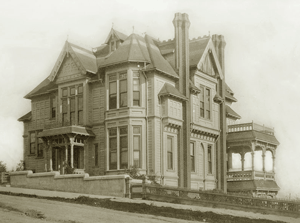 Of all the oft-pictured sites of Los Angeles, Angels Flight is certainly up there amongst them, as who doesn‘t go for those Oldey-Timey images? There‘s probably postcards and ceramic trivets and refrigerator magnets featuring Angels Flight from here to Toledo to Timbuktu, and people probably prefer a pre-1908, pre-Elks Club Building image of the Hill topped with the Crocker Mansion because, again, Oldey-Timey.
Of all the oft-pictured sites of Los Angeles, Angels Flight is certainly up there amongst them, as who doesn‘t go for those Oldey-Timey images? There‘s probably postcards and ceramic trivets and refrigerator magnets featuring Angels Flight from here to Toledo to Timbuktu, and people probably prefer a pre-1908, pre-Elks Club Building image of the Hill topped with the Crocker Mansion because, again, Oldey-Timey.
So what of the Elks Lodge, which supplanted the Crocker (having its 100th anniversary demolition party in a few weeks), that squarish building noted more for giving the world the Angels Flight gateway than for being, well, a squarish building?
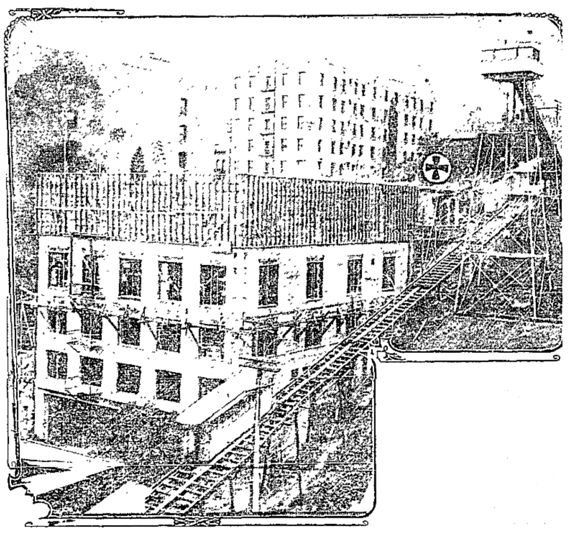
There were in fact two BPOE buildings. The main building fronting Clay Street, at 60×90′, contained an auditorium, dance hall, dormitories and offices; the Annex above at 300 South Olive, on the site of the June ‘08-demolished Crocker (where District Deputy Grand Exalted Ruler John Whichner placed Elks Lodge No. 99 roster, and copies of the September 2, 1908 newspapers in the cornerstone), was 54×64′, and full of reading and writing rooms, plus a billiard hall and card parlors–everything a fraternal organization needed.
At least for a little while. By 1925 the Elks had built much larger and schmantzier digs over by Westlake park.
300 South Olive wouldn‘t go to waste, though, as the Elks‘ brothers-in-fraternity, the Loyal Order of Moose, took over the buildings. They covered "BPOE" on the aforementioned Angels Flight archway and set about putting a lot of boxers to work. 1931:
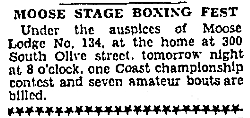
And 1951:
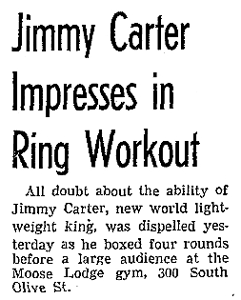
No, not that Jimmy Carter.
The Moose hung on, and kept the building til the end, despite it becoming the Royal Club:
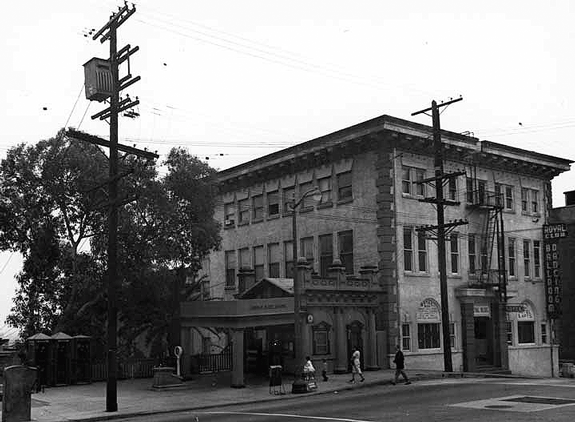
Nice quoins.
In September of 1962 it was just one more structure on the business end of the CRA‘s bulldozers:
 In its small theater–now roofless and with one wall gone because the workmen‘s hammer– tattered remnants of a once-fancy curtain hang over the stage.
In its small theater–now roofless and with one wall gone because the workmen‘s hammer– tattered remnants of a once-fancy curtain hang over the stage.
An old-timer on the hill, Austin Blackburn, 59, of 529 W 3rd St, said the building was a lodge meeting place when he took up residence at the now-demolished Cumberland hotel, across the street at 243 S Olive, 35 years ago. “The Royal, and all the rest of the hill, was a wonderful place then,” he reminisced. “They used to put on free shows and boxing matches in the theater for the folks who lived here. Later it was a dance hall, and during World War II they made a hotel out of it. At one time boxers used to train in a small gymnasium there.”
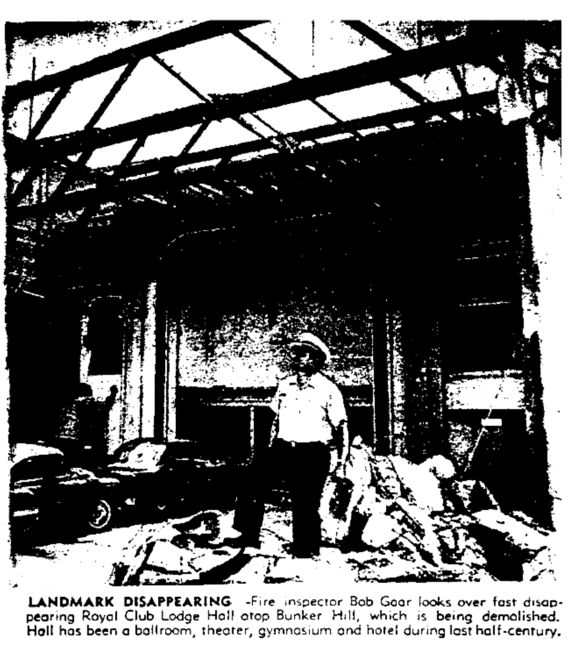
The question being, of course, what became of the cornerstone filled with 1908 newspapers and the Elks’ club roster?
Crocker Mansion image courtesy of the Los Angeles Public Library Photo Collection
Annex image courtesy Arnold Hylen Collection, California History Section, California State Library
Newspaper images from the Los Angeles Times

